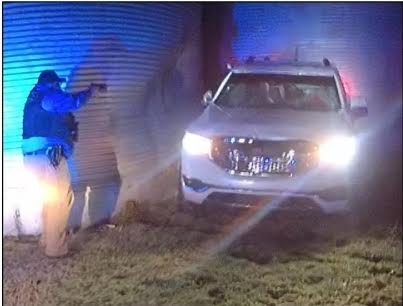Jails may be next on fiscal pain list
Published 9:00 am Monday, April 2, 2018
We wrote recently about the growing trend in Frankfort to solve the state’s budget problems by pushing more costs down to the local level.
There was a big dose of that lurking in a “criminal justice reform” measure introduced during the current session of the Kentucky General Assembly. Supporters said House Bill 396 would save the state $340 million in prison costs over the next decade if passed. But the Lexington Herald-Leader reported that the bill appears dead for the current session. A lawmaker told the newspaper that “the opposition was just too fierce.”
Trending
We can see why.
The goal of the bill was to reduce the state’s prison population over time. It did so in part by making some felonies misdemeanors and eliminating some of the discretion given to judges and parole boards.
The 126-page bill would have reduced many first- and second-offense drug possession crimes from felonies to misdemeanors. It would have raised the threshold for felony theft from $500 to $2,000.
For crimes not involving sex or violence, pretrial release without bond would become mandatory; judges would no longer have discretion. Similarly, parole would become automatic on the first eligibility date for those types of crimes. Parole boards would no longer have discretion to decide.
And for people who get in trouble while on supervised probation or parole, a return to jail to serve out their sentence would no longer be the result. Instead a series of “graduated sanctions” would be applied.
All of this as you might imagine produced pushback from prosecutors and judges, who believe it is too much too fast. But perhaps the most controversial aspect of the bill is not as readily apparent. It is the financial impact it would have on county jail finances.
Trending
The Herald-Leader said that much of the state’s $340 million savings would result from changing lower-level drug offenses from felonies to misdemeanors. Felony offenders are the state’s responsibility. Misdemeanor offenders are not. Thus the $31.34 per inmate per day state payments to local jails that predominantly house nonviolent drug offenders would vanish.
This would turn the finances of local jails on their ears. The state payments historically have gone a long way in helping subsidize the operations of local jails. Loss of those payments would leave local fiscal courts holding the bag.
This killer angel has, for the moment, passed by local jails and counties that run them. But it resembles to us a similar move we commented on in the recent past – provisions in the budget that cut state funding for school transportation and certain health benefits, leaving school districts, and ultimately local taxpayers, to pick up the difference.
This is as we have said previously a shrewd maneuver by lawmakers. It is a subtle way to raise taxes by forcing officals at the local level to do the dirty work.
This really comes as no surprise. State government has been effectively bankrupted by its runaway pension obligations, and as the current session proves, lawmakers still cannot come to grips with that problem. So like it or not, local taxpayers should expect a lot more of this sort of pain in the years to come.






